Recent Blog Posts
Korean Sociological Image #30: Exploiting Koreans’ Body Insecurities
Like everywhere else, Korea has a long tradition of celebrities endorsing government campaigns.
Unlike everywhere else, a “huge proportion of Korean ads depend on famous people,” says Bruce Haines, head of Korea’s largest ad agency Cheil Worldwide, a tendency which in its crudest form degenerates Korean advertising into merely “beautiful people holding a bottle.” In turn, that leads to a scramble for and subsequent overexposure of whichever Korean stars are most popular at that moment, regardless of their inappropriateness for the product(s).
Government campaigns are no different, to my mind the most notorious case still being the National Election Commission’s (중앙선거관리위원회) choice of The Wondergirls (원더걸스) to encourage people to vote in local elections in April 2008. Needless to say, I can’t think of anyone more inappropriate than teenagers (two of whom were only 15), and their choice of outfits simply beggars belief:
But again, no different to what they wore in commercials at the time. Which is precisely my point: regardless of their merits, major trends in advertising are bound to be reflected in government campaigns sooner or later.
And as long term readers of this blog will be well aware, one trend is encouraging consumers to associate certain foods and drinks with certain desired body shapes. While it is hardly unique to Korea, it is done to excess here.
Is it any wonder then, that with the decline of the domestic rice industy, and concerns food security as a whole, that the government would do the same when promoting the consumption of domestic foods and drinks?
Last year for instance, I gave the example of how the Korean rice wine Makgeolli (막걸리) was being marketed to women on the basis that it is supposedly good for one’s skin. Now, I’ve found two more examples by the Ministry for Food, Agriculture, Forestry and Fisheries (농림수산식품부; MIFAFF), using the new group 4Minute (포미닛) and the Olympic medalist Park Tae-hwan (박태환) respectively:
To be clear, I am not saying that either are inappropriate choices. Actually I think they’re rather good: both are very popular, and it turns out that 4minutes’ egg song is a variation of their recent hit “Hot issue” too. I also fully concede that the connections between consumption of the product and obtaining an attractive body are fleeting (4minute) or merely implied (Park Tae-hwan) at best.
But still, they’re there. And given the long-term problems with Korean agriculture as identified above, then I hereby predict that we’re going to be seeing many more public campaigns like these in 2010. In particular, the links made between the products being advertised and obtaining an “S-line” and so on are going to be made more explicit.
Sound like an exaggeration? Well, recall how quickly commercial incentives have transformed decades-old standards for soju advertisements: just three years ago, they overwhelmingly offered virginal images of women, whereas now it’s rather difficult to find ones that don’t present them as eminently sexually available. Moreover, in an effort to appeal more to women, soju companies too are encouraging them to associate new lower-strength brands with maintaining a good body, however implausibly.
But perhaps an even more appropriate example is soy milk. If you’ll bear with me, being allergic to milk means that I follow developments in the soy milk industry here pretty closely, and Starbucks Korea’s belated decision to add soy to its menu in 2005 had a huge impact on my quality of life here! Not unlike the drinks themselves though (anybody know where I can find these flavored ones?) – or, indeed, government campaigns – soy milk commercials tend to be rather bland, so I certainly sat up and took notice when I first saw this one a few days ago:
Soy milk companies too then, seem to be adopting the tactics of their more popular counterparts now. Lest I appear overly critical though, consider the scene 0:03 from 0:06 where 17 year-old Kim Hyun-ah’s says “[S]라인을 유지하려면 어쩔 수 없어,” or “If you want to maintain your S-line, you have no choice but to [drink] this.” Despite my constant criticisms of that sort of thing, and my earnest desire that my daughters don’t grow up to repeat it, I have to admit that I can’t help but find her expression and tone of voice, well, extremely cute…
Yes, I know: very hypocritical of me, and I await your counsel. But on a final, more serious note, consider Garaetteok Day (가래떡데이), MIFAFF’s scheme since 2006 to get people to eat stick-shaped rice cakes instead of Pepero chocolate sticks on November 11 each year. Promoted mostly as a romantic event for couples, as are most imported and/or artificially created holidays (Christmas Day, for instance, is the date the most condoms are sold in Korea), is it really too much of a jump to imagine that concerns about one’s appearances will be added to that too? Watch this space!
Update: An alternative way of exploiting Koreans’ associations with November 11 (source):
(For all posts in the Korean Sociological Images series, see here)
Posted in Korean Advertisements, Korean Economy, Korean Media, Korean Men's Body Images, Korean Sociological Images, Korean Women's Body Images Tagged: 4Minute, 농림수산식품부, 김현아, 포미닛, 원더걸스, 중앙선거관리위원회, Kim Hyun-ah, The Wondergirls
full time student!
I quitted my part time job today~!
from now, i'm full-time student! :-) in another word, i'm a white-hand(백수,a jobless person). But I'm ready to rush toward June's battle!!!
Published! (Heosimcheong Hot Spring)
The spa article includes a review of Heosimcheong Hot Spring in Busan. You can find more info about this spa in my next most recent post - thanks!
Another article of mine will appear soon in Busan Haps Magazine, a similar periodical run by some English teachers in Busan. Look for it in a future post. :)
Destination: A day in Andong (Andong City Tour)
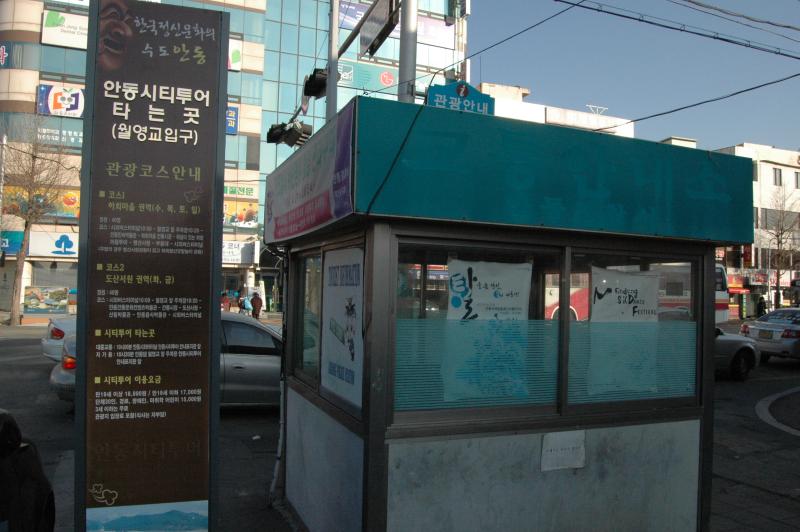
A day in most smaller Korean cities can be spent exploring by yourself or joining a group city tour. With only a day in Andong, and a desire to see as much as possible, I opted for the city tour. The tour leaves at 10am from the Andong bus terminal, which is just a kilometer or so from the train station. Only one tour a day is offered, and will be one of two possible tours based on the day (explained later).

Welcome to Andong - population 185,000; home to several Korean cultural and folk traditions, including wooden masks, Andong soju (45% alcohol, yet supposedly doesn't give you a hangover), and a papermaking factory.
Our fearless leader drove up with this van - and waved us in. His English skills were pretty slim, making me believe he escorts far more domestic than foreign tourists.
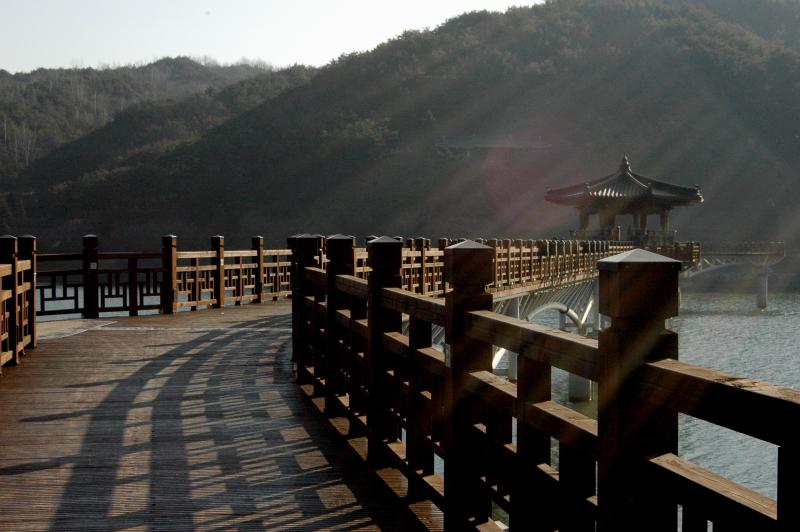
Our first stop is 월영교 (Weolyeonggyo) - also known the Moonlight Bridge. Coming during the day means the moonlight is a little hard to spot. Its claim to fame is length - at 387 meters long, it's the nation's longest walking bridge. It's also made entirely of pine - some interesting trivia for those trivia buffs out there.
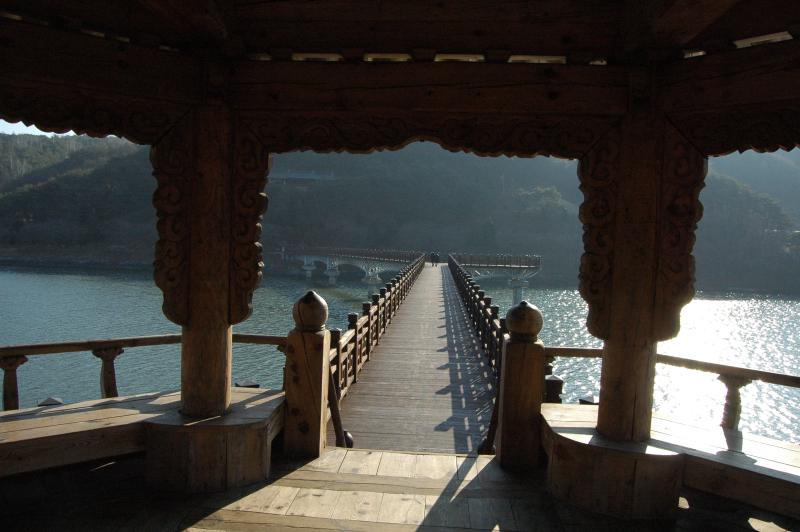
A pavilion in the center of the river gives you a rest while crossing, if you need it.
We were the only people on the tour leaving from the bus terminal, but we caught up with several Koreans after seeing the bridge. Our next stop - a seven-storied brick pagoda:
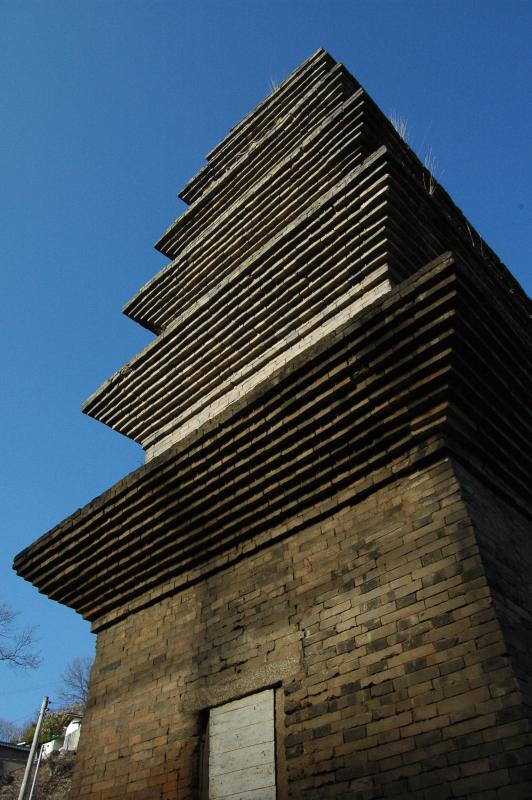
It's National Treasure #16 and the oldest brick pagoda in Korea. According to the nearby sign, tiles used to be laid on the roof, indicating a wooden pagoda used to exist in the same spot. The pagoda was repaired in 1487, when a portion of Beopheungsa (Beopheung Temple) remained nearby.
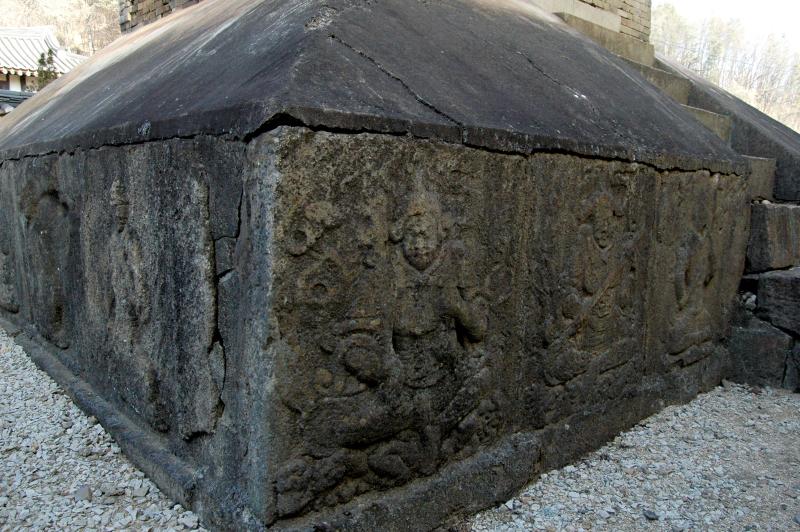
One of the corners of the pagoda's base, showing the Devas and Deva Kings.
Our next stop: the Traditional Cultural Contents Museum (also called the Museum for Digitized Contents of Andong Traditional Culture).

Going from a historical site to one of the most high-tech museums I've ever seen. Start by registering an RFID card with your name, preferred language, and e-mail address on one of the touchscreen computers - you'll use this card to try out the various exhibits.

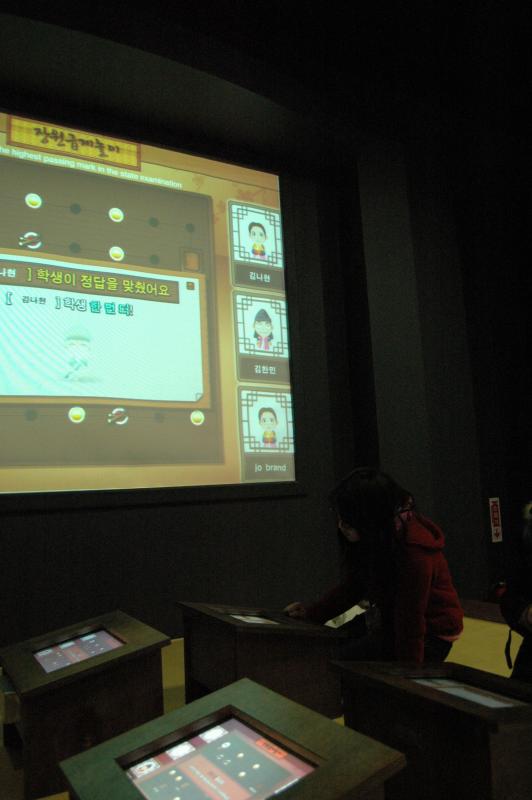
One highlight of the museum is this game based on the old state examination one took to get a government position. The modern 'exam' involved touching a touchscreen to roll the yoonmok - a four-sided wooden stick that served as a dice - to move about a Sorry!-like board. Several spots offered a 'roll-again' chance if you answered a question on Confucianism or Korean sayings.
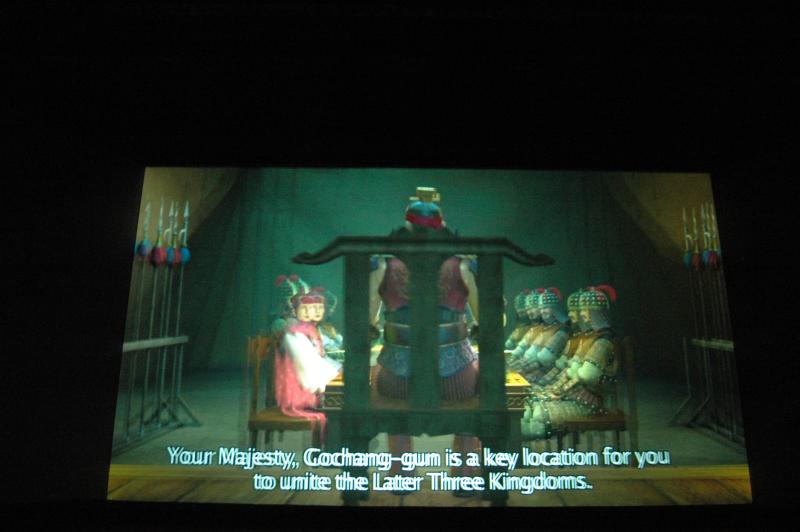
A 3-D presentation (the sign said 4-D, since the seats moved and air blew on the audience) of the battle of Gochang - a battle fought in Andong in 930 A.D. between Hubaekje and the Goryeo army led by Wanggeon, who won control of the city and renamed it Andong. The 15-minute movie had Korean audio with English subtitles, and featured more than enough action along with the plot based on history. You won't confuse it with 'Lord of the Rings', but it was one of the most impressive efforts to bring Korean history to younger generations that I've seen.
Next stop: Hahoe Gyeomamjeongsa (하회 겸암정사) - a home built by Ryu Un-ryong (1539-1601). He wrote under his pen name 'Gyeomam', which he later adopted as the house's name.
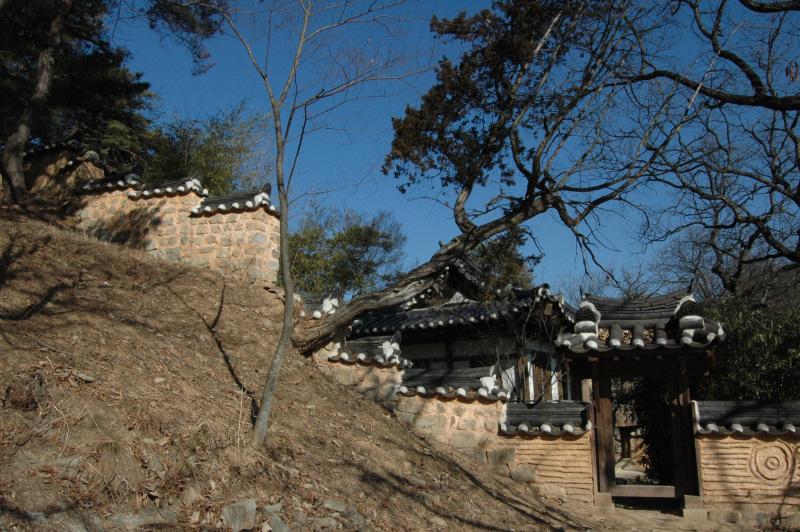
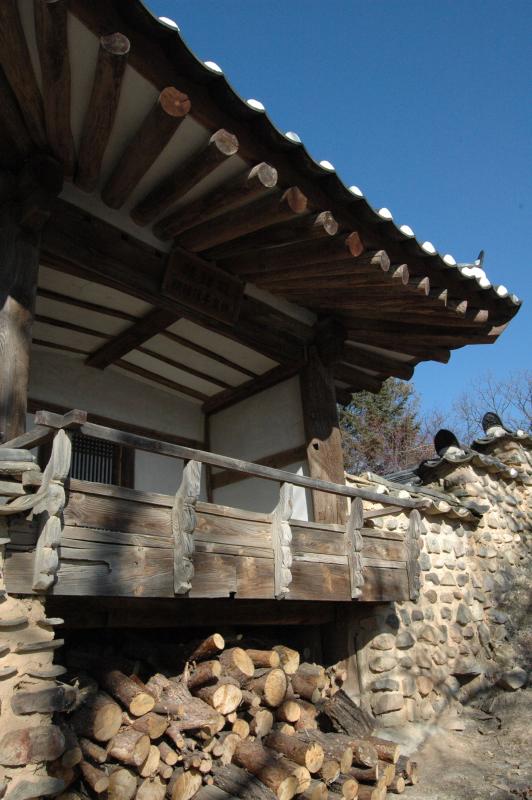
An example of the ondol system that heated the houses' floor.
After seeing the house, we climbed a small hill near the house to take a look at the Hahoe Village, our next stop:
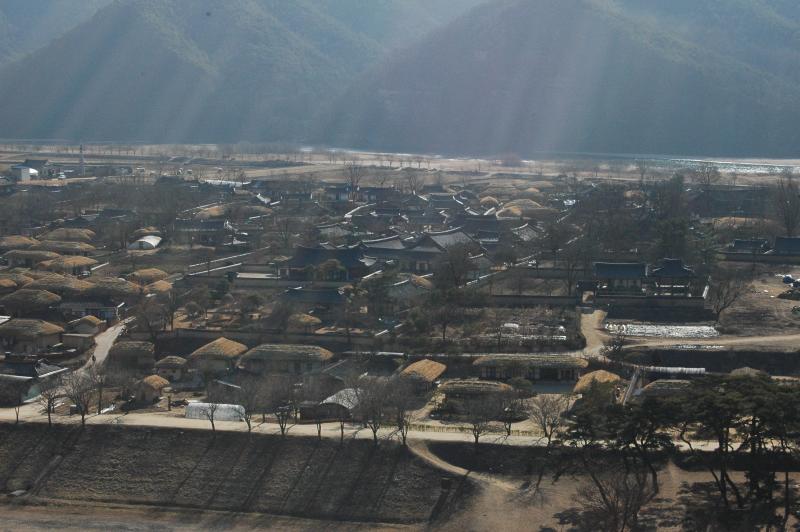
This is not a model, by the way - it's the real thing, albeit view from the top of a hill several kilometers away.
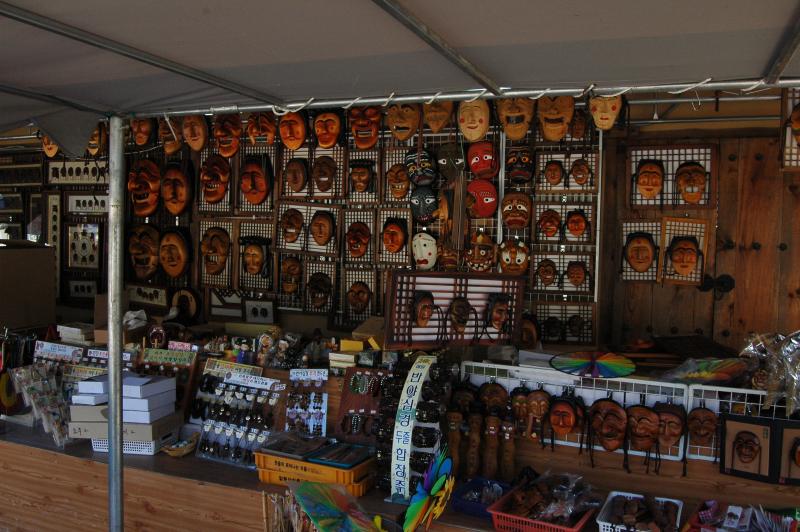
After some lunch in Hahoe Village (하회마을), we meandered around the souvenir shops nearby. Andong is fairly well-known for its preservation of a traditional mask dance. The legend behind the masks? Look here for the full story - the short version involves a plague sweeping a village. A young man named Heo Doryeong is inspired / called to make 12 masks, but to keep them a secret from everyone. His maiden snuck a peek at the last one while he was making it, and the gods killed him with one mask's jaw left unfinished. The 12 masks each represent a different character of the ancient dances.
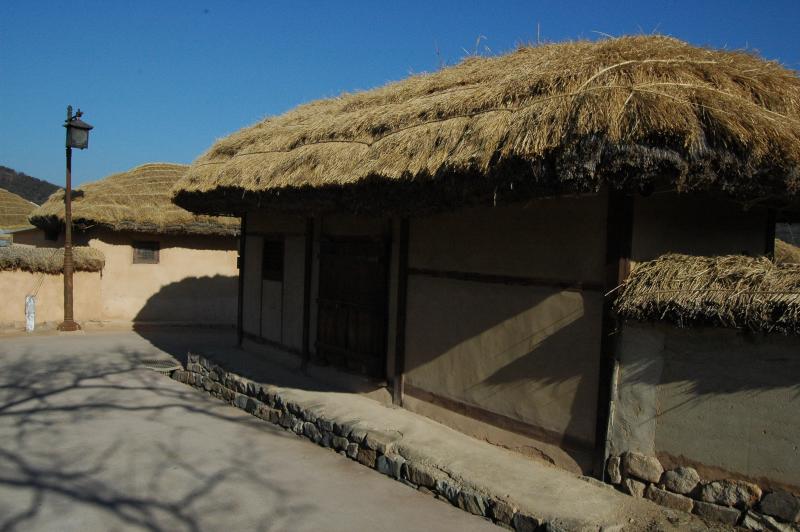

The straw-roofed houses of the area - reconstructed, of course - but still interesting to look at.
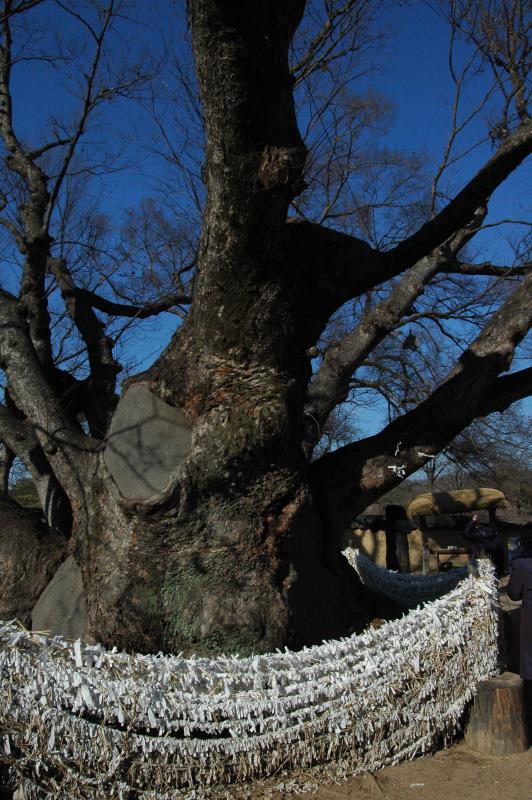
One highlight of the village - a 600 year old zelkova tree said to be the residence of a goddess named Samsin. Apparently, she's in charge of pregnancy, childbirth, and child rearing in these parts. A nearby table had paper and marker handy, allowing you to tie your wish onto the strings surrounding the tree.
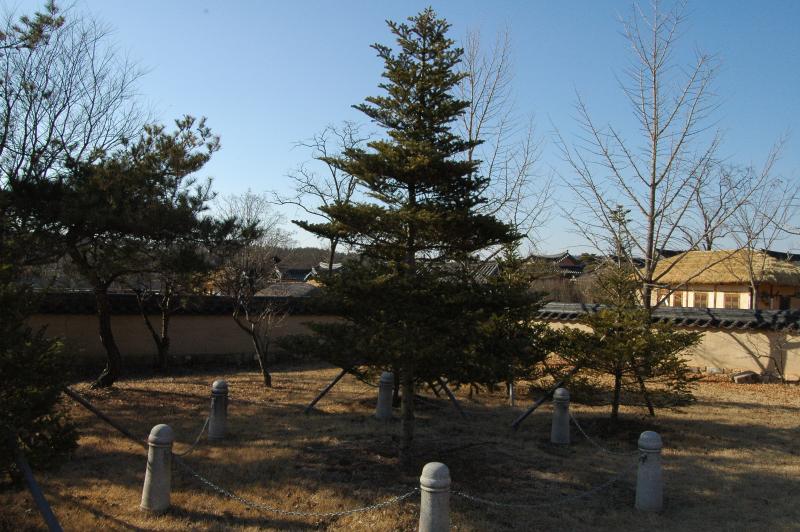
The tree that the Queen planted - specifically, the Korean fir tree that Queen Elizabeth planted here in 1999 to commemorate her visit to Andong. Even 10+ years after this event, it seems an event that will live on for all time - or as long as the signs do.
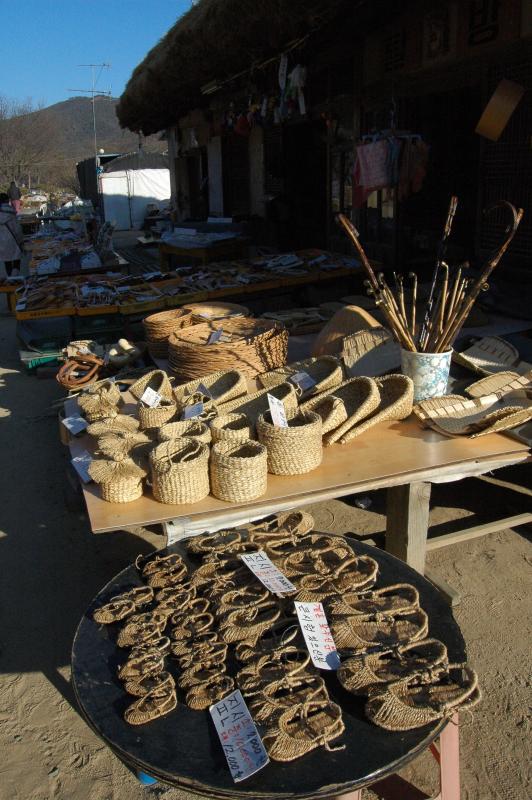
Souvenirs were scattered around the hour and a half long walking course. There's plenty of reasons to spend an entire day here alone - but after seeing most of the highlights, it was time to move on.
Our next stop: Byeongsan Seowan (Academy of the Mountains [shaped like] Folding Screens) - a Confucian school originally built in 1614 to worship Ryu Seong-ryong. A place of calm and wonderful handiwork:

The entrance to the academy - Bongnyemun (gate). Byeongsan Seowon (병산서원) was first founded in 1572 (1575?) by Ryu Seong-ryong (Prime Minister under King Seonjo). The school flourished, though I couldn't tell you if it had something to do with being exempt from conscription, taxation, and extra unpaid labor duties. After he passed away in 1607, his followers set up a shrine in the area to honor his tablet. Having a shrine was apparently the ticket to becoming a formal Confucian academy - after being graced with a sign featuring king-inscribed Chinese characters (屛山書院), it was considered a royally chartered private academy. A few short years later, the father of King Gojong closed all but 47 private schools across Korea in an effort to reduce the infighting between schools and to help increase efficiency within the Joseon Dynasty government.
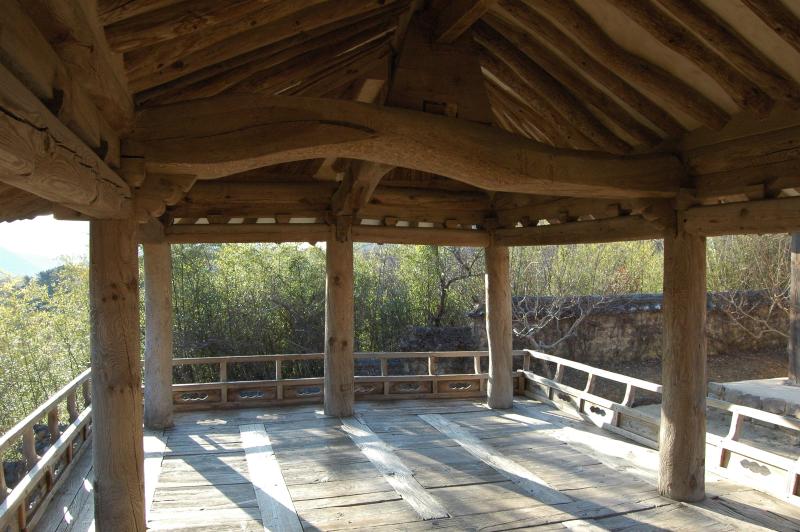
Mandaeru Pavilion - large enough for 200 people, the staircases are made of single logs and the view includes the nearby Nakdong River and Byeongsan (Mt. Byeong).
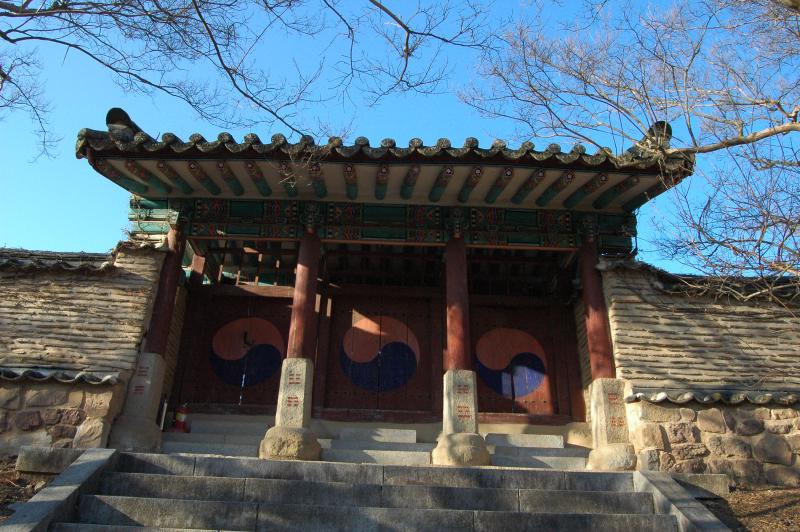
Near the back wall is Naesammun - a locked gate. Behind the gate is the shrine itself (Jondeoksa), but there was no getting to it.
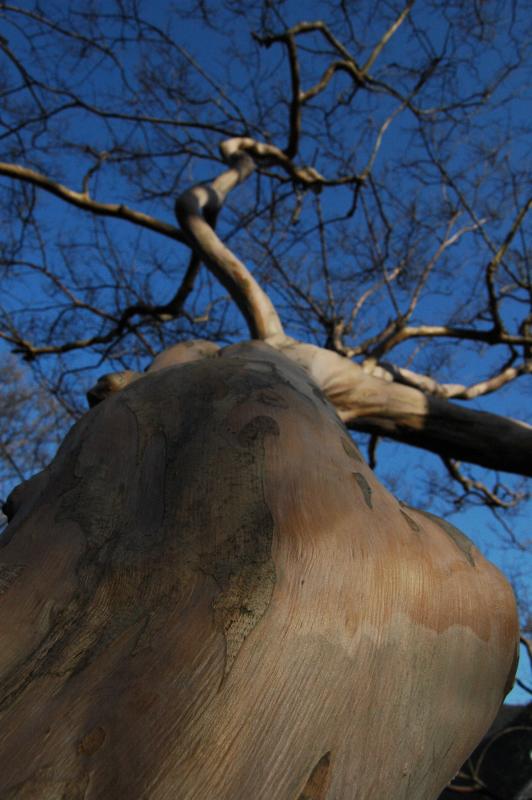
After some difficulty with the language barrier, we learned some interesting facts about this tree. Like a couple others without any bark in the area, this tree was called a 'tickling tree'. Lightly touch or scratch the main tree, and supposedly you'll see one of the branches moving about, as if laughing from being tickled.
Off to our last stop we go - Andong Hanji (안동한지):
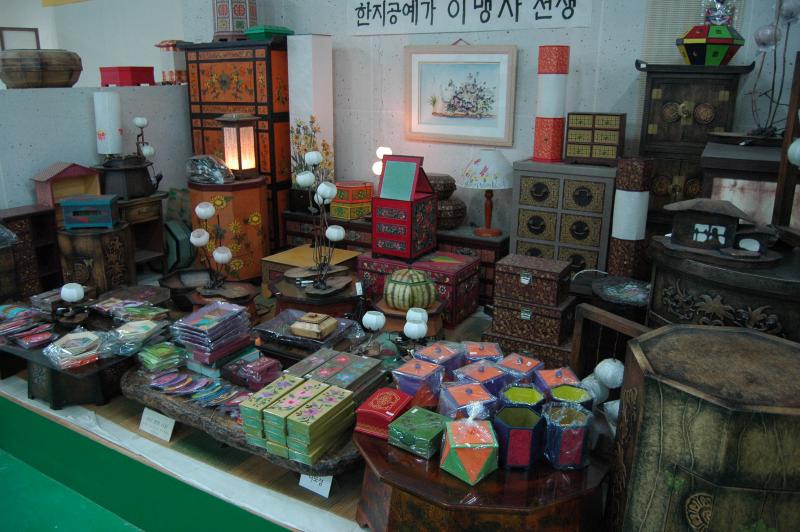
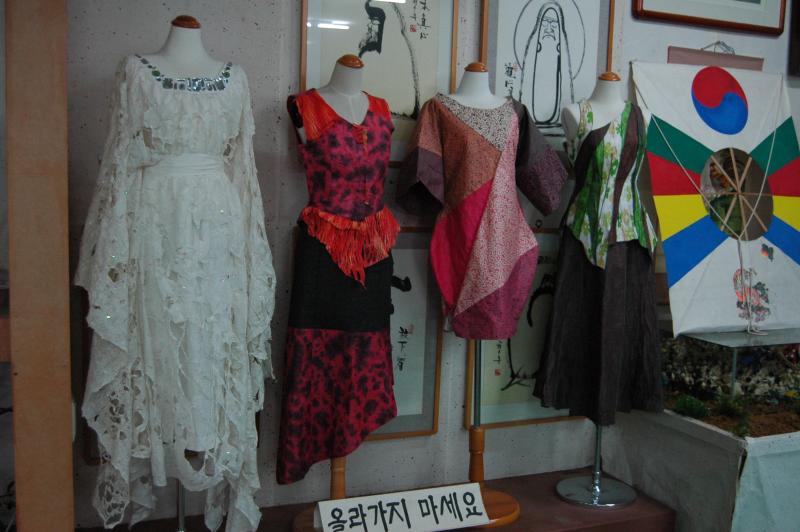
Yes, that's paper - expertly cut, folded, molded, possibly worn, and definitely took some time to finish. Strangely enough, this was the first place we stopped. The site offers a glimpse into the world of hand-made paper manufacturing. Start with bark from the mulberry tree, then separate the bark from the fibers.
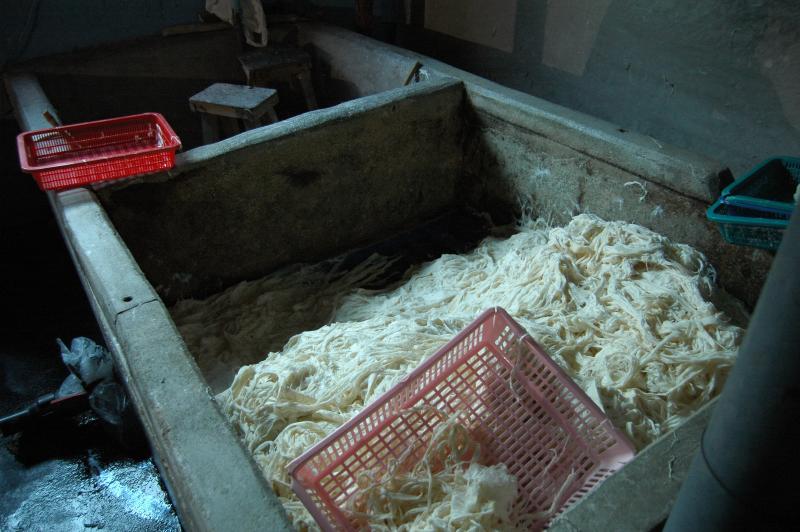
A sample of the fibers from the raw mulberry tree - this would eventually be transformed into paper after straining the pulp, adding some glue, drying the paper, and cutting or coloring according to need - all done handmade. Suddenly that little blank book that cost 5,000 won seems pretty cheap.
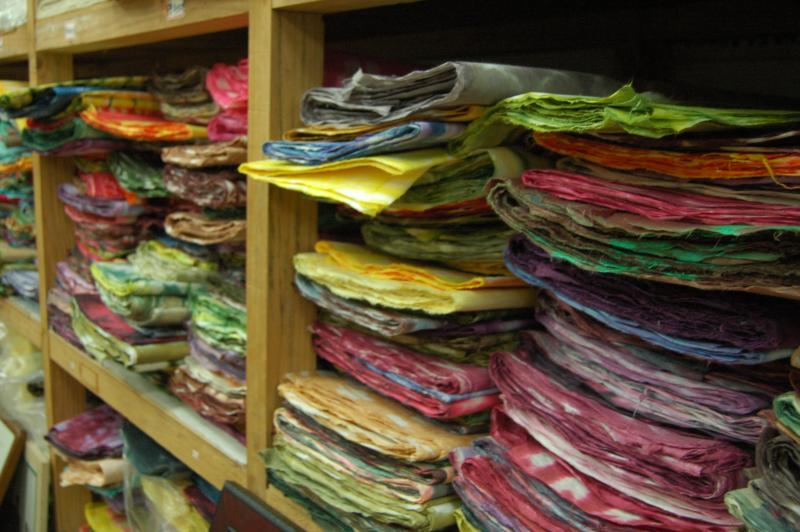
The tour van typically ends at the bus terminal, but since the train terminal is so close we asked to get off there instead. It's a full day touring, and while we weren't precisely rushed, taking time to smell the roses would have interfered with the schedule. That's the trade-off for joining a group tour - seeing more things but spending less time at each. One idea is to use the group tour as a chance to discover some new places, then go back to really see your favorites on your own time.
Ease to arrive:

Foreigner-friendly:

Convenience facilities:

Worth the visit:

Directions: take an express bus or train from anywhere in Korea to the Andong Bus Terminal or train station (buses are usually easier and a bit faster). One at the bus terminal, walk towards the street and look for a four-sided brown pillar advertising the tour. The tour van leaves from that area at 10am everyday except Monday. Tuesdays and Fridays the tour's major destination will be Dosan Seowon (a Confucian school similiar to Byeongsan Seowon above); Sundays, Wednesdays, Thursdays, and Saturdays the tour will be like the one you've read about above. The cost of 18,000 won per person pays for the guide, the vehicle, and all admission costs - lunch is not included. For more information about the tours (in Korean), check out their website at http://andongtour.kr/coding/sub1/sub2.asp.
 © Chris Backe - 2010
© Chris Backe - 2010This post was originally published on my blog, Chris in South Korea. If you are reading this on another website and there is no linkback or credit given, you are reading an UNAUTHORIZED FEED.
On hagwons, students, and the disconnect between money and knowledge
The Korea Herald story sounds innocuous at first - a lengthy article on the many varieties of hagwon (private schools) available throughout the country. You'll find more hagwon in the richer areas of Seoul than anywhere else, and the subjects they attempt to teach are simply astounding. While English and math hagwon have been around for a long time, these days there are hagwon for acclimating you to join the army (recall that Korean males are required to serve two years after high school, and are often more apprehensive about that than college), for understanding medicine, to help you quit smoking, and even for dating. Yes, dating:
"I told you a hundred times that 'how to say' is much more important than 'what to say,'" said Kim Byeong-cheol, the instructor and also director of the hagwon, furiously writing "30 percent" and "60 percent" beside "how to say" and "what to say," which he had previously scribbled on the white board.Students hurriedly nodded and highlighted the phrases in their textbooks.
A volume of teaching materials which would amaze most people who had never imagined that dating skills could be taught in such an academic way, were used in the class.
One kind was video clips of actual blind date situations. In the video, a guy was struggling to make a conversation with the beautiful girl sitting in front of him. After the viewing, the class tried to figure out what the guy had done wrong.
"I think his baseball cap was an error. His glasses, too. He should've worn contact lenses," said a student.
"He's leaning towards the girl too much. He looks too desperate. It is certainly not the ideal posture of a proud male," said another.
"Is he wearing short sleeves or did he roll up his sleeves? I heard it is better for men to hide as much flesh as possible and for women to reveal as much as possible on a first date," said the last one.
"What you guys said were all correct. I mean, what's with the baseball cap? A fedora could have been better. We have interviewed the girl, so let's hear her impressions of the guy," the instructor said, clicking another video clip.
The class continued for two and a half hours, looking at video clips, discussing them and going over the textbook with the instructor.
What disturbs me is the notion of one-method-fits-all teaching. If having the right 'look' means dressing the same preppy / pretty way, count me out. There's a 'correct' way to talk to a woman? Give me a break. The thought that sitting in a classroom and taking notes will somehow help me pick up women? Come on. While I don't advocate the type of 'pick-up school' promulgated by Neil Strauss' "The Game", it is at least more experiential in its nature. Learning to fly without a safety net forces you - yes, forces you - to get out there and do it. Going to a class that either lets you cheat or get by with simulated situations can't possibly prepare you for reality. Only reality and time can do that - until you get both from a experienced teacher, you're shortchanging yourself and being overcharged at the same time.
Beyond collecting money and providing something claiming to be education, the one thing these hagwon seem to promote is Their Method - calculated, crafted, and honed by supposed years of experience in the field. Only we have the inside edge on the subject at hand, the best teachers, and the hyperbole goes on. To be fair, I have the firm belief that anyone can learn given the interest and desire to learn - and some hagwon may be conducive to such endeavors. That some schools will teach their One Method to Fit All People seems a slap in the face to independent thought, personal freedom, or different approaches.
Beyond the dating hagwon mentioned in the story, there's also the medical schools. Supposedly for medical school graduates, a few quotes from the story gave me pause:
"Also, there is a big gap between medical classes given in universities and the actual medical scene but the professors can't teach the students one by one how to fill the gap. It is up to the students. Unfortunately, most medical students these days are used to hagwon and private lessons, so they don't know what to do unless they are taught. At the hagwon, we teach experience rather than medical knowledge," he said.
Medipreview started in 2003 when Gwon gave an emergency room lecture to 40 public health doctors.
"Because they just graduated from medical school, they didn't know even the most basic things like how to read X-rays or what kind of medicine to prescribe. They needed help," Gwon said.
What the heck are you learning in medical school?
As long as people perceive a hagwon to be an advantage in their job, career, or dating prospects, the hagwon will continue to prosper. Paying money for 'education' is not only socially redeeming, it sounds good. Your friends may respect you more or ask what you learned, giving you an opportunity to either demonstrate or shy away from the question. It creates the appearance that you're actively improving your life without necessarily providing the desired benefits. It's akin like going to the Weight Watchers club but not following the eating guidelines when not in class.
In the end, the only person that gets cheated is yourself - you may have received a certificate from the dating school, but that doesn't mean you can talk to the opposite sex any better.
 © Chris Backe - 2010
© Chris Backe - 2010This post was originally published on my blog, Chris in South Korea. If you are reading this on another website and there is no linkback or credit given, you are reading an UNAUTHORIZED FEED.
analog indo-china
Currently outside Korea. Returned to Florida from a financially disastrous travel binge. Will be posting various reflections from the journey while in limbo.
Here’s somewhat of a 35mm overview brought to you by the ol’ trusty toy camera.
Posted in photos, Travel Tagged: 35mm, asia, vivitar ultra wide and slim
2009 - The Year That Was (Part 2)
May
All at once I became an alien who taught beautiful little wolves and was constantly surrounded by robots. Luckily I quickly met some amazing people who taught me that the sun is just another friend who crashes your parties at just the right moments.
The weather was beautiful and because I live a steroid abusing baseball player's stone's throw from the ocean, everything just seemed that much nicer .... I developed a batting cage addiction, and sometimes photos lead to running away from silly policemen.
In the Glass Box

Does it tell you something about living here that I was suddenly a very self-conscious foreigner, mentally willing the locals not to look in my direction? Perhaps I've been exposed to the Korean media for too long. Foreigners - crime - foreigners - crime foreigners - crime...
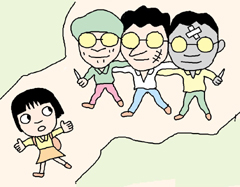
A young Korean girl flees some evil foreigners in this Chosun Ilbo story
The KT phone boxes in question are actually outside a medium-sized local KT office, so I suppose one mustn't rule out the possibility that it may be an antagonised customer or disgruntled employee...
Busanmike.blogspot.com
Twitter: @BusanMike
YouTube: /BusanMikeVideo
Flickr: /busanmike


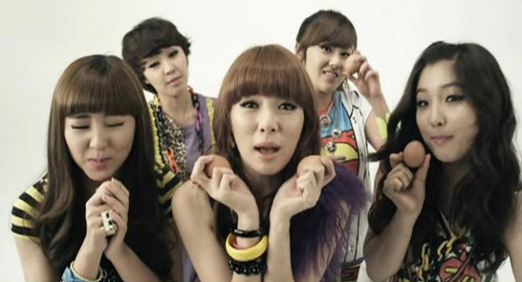
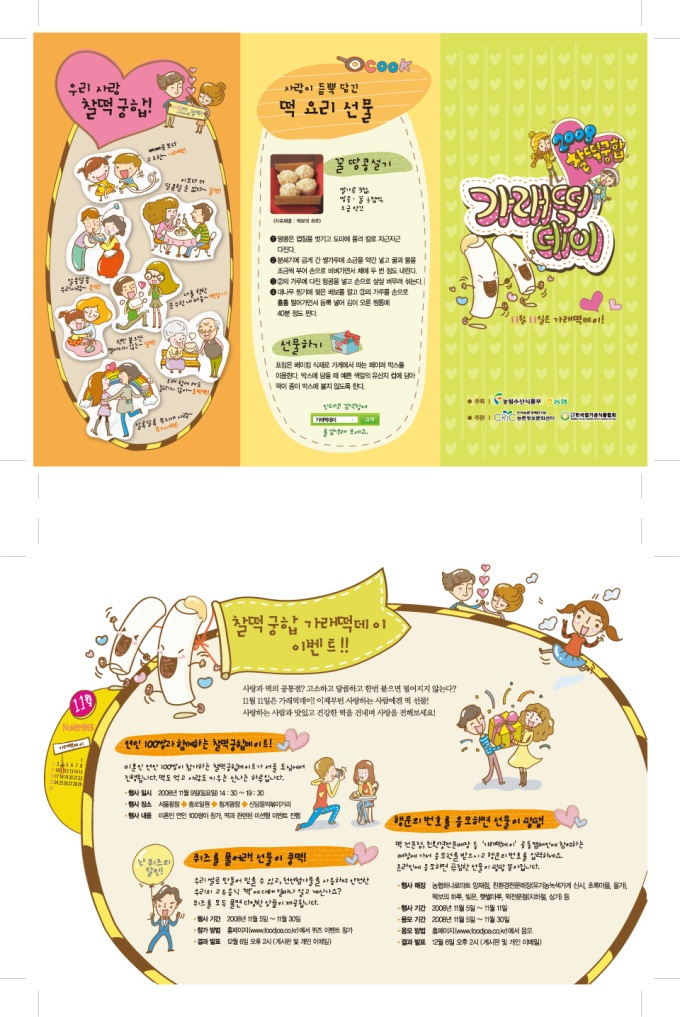
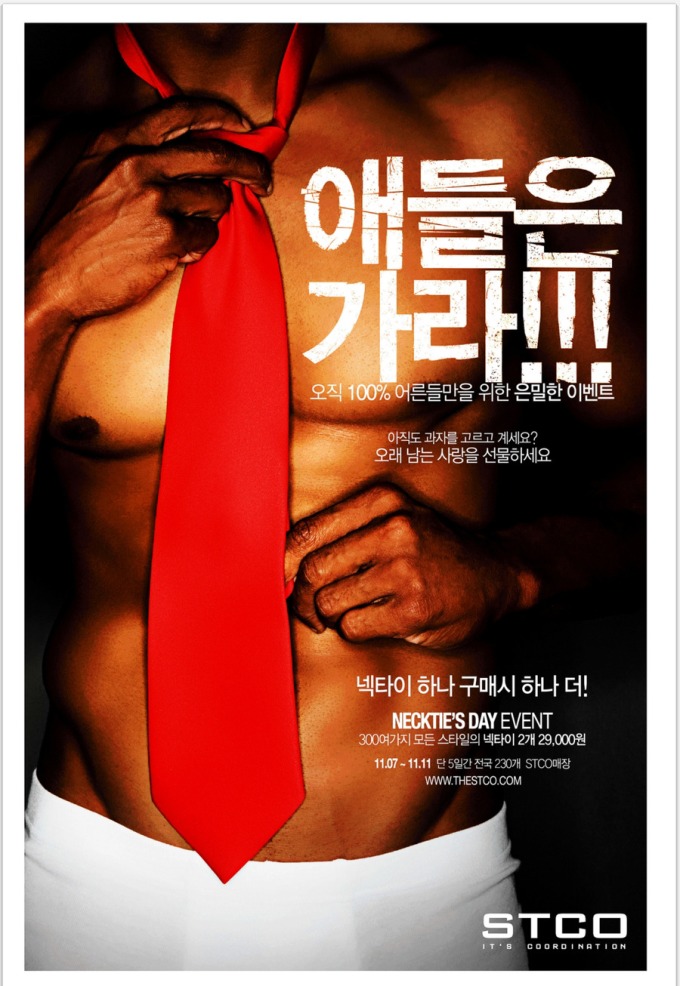


 RSS Feed
RSS Feed




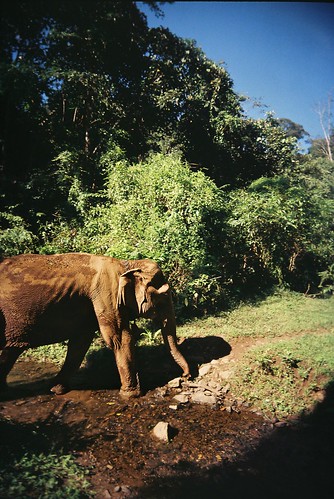



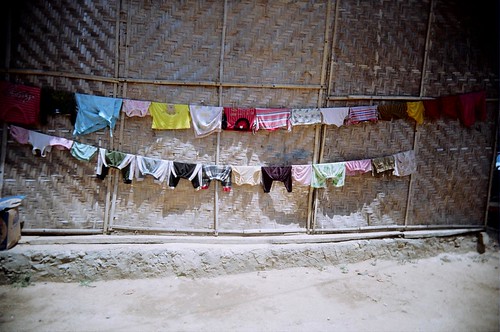






Recent comments